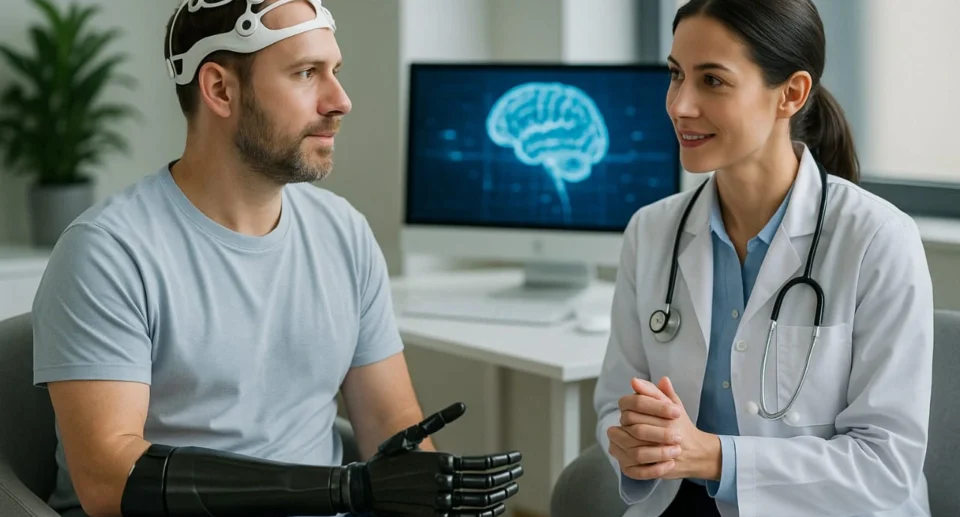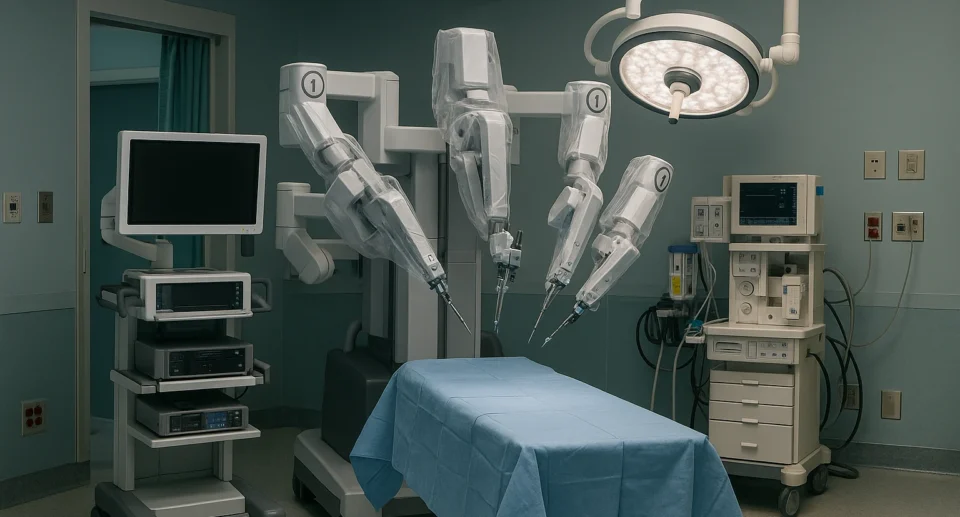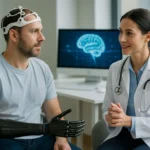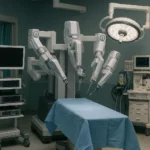Brain Computer Interfaces & Bionic Limbs: Restoring Mobility

Every day, millions of people face paralysis or amputation, which makes it even more difficult to move or perform simple tasks independently. However, the very definition of medicine and technology is being rewritten as we speak. From bionic prosthetic limbs to brain-computer interfaces, state-of-the-art technologies bring us back to the self-reliant and mobile world.
This blog captures much more than all these innovative embodiments; it covers the research backing them and the advice for professional medical counsel.
Understanding Paralysis and Amputation
Paralysis is the condition where one is deprived of muscle control in certain body parts. Spinal cord injury, stroke or any other form of neurological disease can severely paralyze either the whole body or just one limb. Amputation takes place in the total or partial removal of a limb as the result of trauma, infection, cancer or birth defects.
The amputee always faces uphill tasks socially and emotionally while trying to come to terms with life without a limb. Loss of locomotion hurts work-life, social life and mental health. Both conditions’ general goal is the restoration of function and independence.
In the past, this could be accomplished through conservative forms of treatment; now science offers even wonderful tools to restore the rhythm of life.
Bionic Limbs: Redefining Movement
Bionic limbs have ceased to exist purely in the realm of science fiction. Mechanical limbs that emulate natural movement are being created. Bionic artificial limbs use motors and sensors to interpret the body’s signals and generate movements in response to them.
Bionic prosthetic limbs provide more flexibility, grip strength and real-time feedback compared to conventional prosthetics. Some even electrically connect to residual muscles for users to control movements with their minds.
For instance, in India, AI-powered prosthetics are now being used by patients to walk, run or even ride bicycles. Bionic limbs are not only able to give amputees back functionality but also allow them to roam through the world at their own pace.
Brain Computer Interfaces: Rewiring the Nervous System
A brain-computer interface can act upon neurological signals from the brain and offer direct control of external devices. Here is the way: The electrodes capture the neural signals from the brain, decode it into commands and transfer them onto a machine like robotic arm or to a computer screen.
Providing an avenue for paralysed individuals to find hope with possible treatments is offering BCIs. Individuals with spinal cord injuries have utilized brain-computer interfaces to drive wheelchairs, control robotic arms and even type text with their thoughts.
This technology will revert functionality, but confidence and dignity accompany it. The procedure is complicated, but the results are simply moving through thought.
Stem Cell Therapy: A Regenerative Frontier
When it comes to mechanical solutions, there are BCIs and bionic limbs. Biological repair is what stem cell therapy deals with. Stem cells are, uniquely, able to differentiate into various cell types and promote healing.
Here, stem cell therapy aims to repair damaged spinal cord tissues, which are often injured in the cases of paralysis resulting from damage to their nerve roots. Several trials have shown promising outcomes with respect to patients regaining partial motor function after treatment.
In a country like India, this therapy is climbing in popularity. Now, many of the clinics available in India have stem cell therapy as one of the procedures and this has brought a good number of people looking for medical tourism in the area. Stem cell therapy costs are relatively much lower in India than in Western countries, making it suitable for even foreign clients.
Research on Brain Computer Interfaces: What Science Says
Scientific research backs the use of bionic limbs and BCIs. For example:
- A Stanford study showed that patients using brain-computer interfaces could move robotic arms with over 90% accuracy.
- MIT researchers developed AI-powered bionic artificial limbs that learn from user behavior to improve response time.
- In a trial involving stem cell therapy, paraplegic patients experienced restored sensory responses and improved bladder control.
Meanwhile, research continues to refine these technologies, making them safer, more efficient and more accessible. What was once theoretical is now clinical reality.
When to See a Doctor
If you or a loved one experiences any of the following, it’s time to consult a medical expert:
- Sudden loss of limb function or movement
- Difficulty adjusting to an existing prosthetic
- Interest in exploring bionic limbs or paralysis treatment options
- Considering stem cell therapy and want a second opinion
Early diagnosis and intervention are key. A rehabilitation specialist, neurologist or prosthetic expert can guide the journey toward recovery.
Rehabilitation and Physical Therapy Support
Recovery can be considered complete only after surgery or after the device has been implanted. Another important aspect to consider is physical therapy, which helps retrain the body and brain. Whether it is walking again with a highly advanced bio-robotic limb or developing coordination with a BCI, rehabilitation trains patients to benefit more from modern treatment solutions.
Trained therapists assist with:
- Strength building and mobility training
- Prosthetic adjustment and usage
- Then, cognitive and behavioral support
- Finally, long-term lifestyle adaptations
Psychological Impact and Emotional Recovery
The emotional journey following paralysis or amputation is by all means equally significant to that of the physical. Depression, anxiety and crises of identity usually occur, especially in the early stages. This is another reason psychological support becomes absolutely important.
Counseling and support groups offer:
- Space to process trauma
- Techniques to cope with anxiety or grief
- Community among fellow survivors
- Encouragement during the recovery journey
By addressing emotional wellness, patients heal holistically—not just physically.
Innovations in Assistive Technologies
Following prosthetics and brain-computer interfaces, assistive devices make great strides. Furthermore, smart wheelchairs, eye-tracking communication devices, and AI-enabled exoskeletons improve patient autonomy.
Some examples include:
- Wearable robotic suits aiding mobility
- Voice-command systems for daily tasks
- Neurofeedback devices for cognitive stimulation
Such tools are empowering those with limited mobility to lead independent, dignified lives.
The Future of Restoring Mobility with Brain Computer Interfaces
As science advances, the fusion of AI, robotics and biology continues to grow stronger. We envision:
- More affordable and responsive bionic artificial limbs
- Non-invasive brain-computer interfaces
- Enhanced stem cell therapy results through genetic engineering
India is becoming a global hub for such treatments, attracting patients worldwide with its cost-effective and high-quality care.
Why Choose India for Advanced Treatments like Brain Computer Interfaces
- To begin with, India is home to world-class hospitals with cutting-edge technologies.
- Moreover, high-quality medical expertise comes at a fraction of the global cost.
- In fact, India leads in stem cell therapy, bionic prosthetic limbs, and brain-computer interfaces.
- Additionally, English-speaking doctors and internationally trained specialists enhance patient comfort.
- As a result, it’s a trusted destination for medical tourists from over 100 countries.
- Finally, shorter waiting times and personalized care make the experience even better.
Why Choose Regimen Healthcare for Brain Computer Interfaces and Advanced Mobility Care?
- Access to India’s Top Medical Experts: Connect with leading hospitals and world-renowned specialists.
- Personalized End-to-End Care: Dedicated case managers handle everything from reports to recovery.
- Transparent & Affordable Plans: Clear pricing with no hidden costs, including advanced treatments like stem cell therapy.
- Full Travel & Wellness Support: Visa, airport pickup, stay, and follow-ups—all managed for you.
- Trusted Globally: Hundreds of patients worldwide rely on our compassionate and professional care.
Regimen Healthcare—Your trusted partner in healing.
Conclusion: How Brain Computer Interfaces Are Shaping the Future of Mobility
Bionic limbs, brain-computer interfaces, and stem cell therapy are not just technical marvels, but more rather lifelines. As a result, they put patients suffering from amputations and paralysis back into the arena of independence and mobility which is a dignified life.
If you are one of the patients who are contemplating the application of such treatments, contact your physician concerning your options. The door is open; now it is just yours to walk through, thanks to science.
If you or your loved one is living with paralysis or limb loss, don’t wait. Contact Regimen Healthcare to explore cutting-edge solutions in bionic limbs, brain-computer interfaces and stem cell therapy in India.
Get in touch today for a free consultation and expert medical guidance.
📞 Call or WhatsApp: +91-9310356465
📧 Email: [email protected]
🌐 Visit: www.regimenhealthcare.com
Your journey to restored mobility starts here.
FAQs
1. What are bionic prosthetic limbs?
They are artificial limbs equipped with electronics and sensors to mimic natural limb movement.
2. How do brain computer interfaces work?
They detect brain signals, decode them, and use them to control external devices.
3. What is stem cell therapy used for in paralysis?
It helps regenerate damaged nerve cells and restore partial function in spinal cord injuries.
4. Is stem cell therapy available in India?
Yes, several reputed centers offer stem cell therapy in India.
5. How much does stem cell therapy cost in India?
The stem cell therapy cost in India varies but is generally more affordable than in Western countries.
6. Can bionic limbs restore complete mobility?
They significantly improve function but full restoration depends on multiple factors including training and integration.
7. Who are eligible for brain computer interfaces treatment?
Patients with paralysis due to spinal cord injury or neurological conditions may be eligible after evaluation by specialists.
8. Are there risks involved in stem cell therapy?
Like any medical procedure, there are potential risks such as infection, immune response, or ineffective results, which should be discussed with your doctor.
9. How long does it take to adjust to a bionic limb?
Generally, it varies from person to person, with proper rehabilitation and training, many adapt within a few weeks to months.
10. Can these treatments be combined for better outcomes?
Yes, in some cases, combining stem cell therapy with assistive technologies like BCIs or bionic limbs can enhance recovery and functionality. Moreover, it can provide added benefits.








